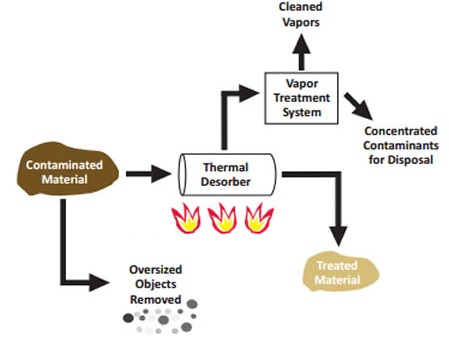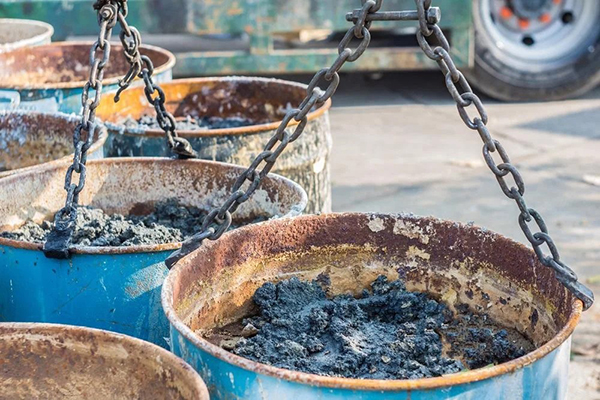Oily Sludge Treatment Technologies
Oily sludge is a common byproduct of many industrial processes, including oil and gas production, refining, and petrochemical manufacturing. Oily sludge is a hazardous waste that can contain hydrocarbons, heavy metals, solids particles, and other pollutants. Proper oily sludge treatment is essential to minimize environmental impacts and comply with regulatory requirements.
Oily sludge treatment is a complex process that requires careful consideration of the nature of the sludge and the desired treatment outcomes. The choice of treatment methods depends on factors such as the composition of the sludge, environmental regulations, and the goals of the treatment process. Some of the most important oily sludge treatment methods include the following:
Thermal desorption
Thermal desorption is a treatment method used in the oily sludge treatment process to separate hydrocarbons from the sludge by applying heat to high temperatures in the absence of oxygen. This method utilizes thermal energy to volatilize and separate the contaminants, such as oil and other organic compounds, from the solid components of the sludge. Thermal desorption is an effective technology for oily sludge treatment and can recover up to 95% of the oil content.
Thermal desorption is a versatile and effective method of oily sludge treatment, particularly when high hydrocarbon recovery and volume reduction are key priorities. The selection of this method should be based on a thorough understanding of the specific characteristics of the oily sludge and compliance with environmental regulations.
Immobilization
Immobilization is a technique used in oily sludge treatment to control and reduce the mobility of contaminants within the sludge. This method involves the addition of agents that interact with the contaminants, such as hydrocarbons, heavy metals, or other pollutants, to immobilize them and prevent their migration. The selected immobilizing agents can include binders, stabilizers, or amendments that react with the contaminants to form stable, less mobile compounds.
The goal is to stabilize the contaminants, minimizing their potential for leaching or spreading to the surrounding environment. This prevents the contaminants from leaching into the environment and reduces the risk of exposure.


Bioremediation
Bioremediation is a biological treatment method used in the oily sludge treatment process to harness the natural metabolic activities of microorganisms to degrade and transform hydrocarbons present in the sludge into less harmful substances. This method relies on the ability of certain bacteria and other microorganisms to utilize hydrocarbons as a source of energy and carbon.
Selected strains of hydrocarbon-degrading microorganisms, such as bacteria and fungi, are introduced or inoculated into the oily sludge. These microorganisms are often referred to as “biodegraders.”This technology can be used in situ or ex situ and is an environmentally friendly solution for oily sludge treatment.
Bioremediation is a valuable method for treating oily sludge, particularly in cases where a natural and sustainable approach is preferred. The success of bioremediation depends on careful planning, site-specific considerations, and ongoing monitoring to achieve effective and environmentally sound treatment outcomes.
Solvent extraction
Solvent extraction is a chemical treatment method used in the oily sludge treatment process to separate and recover hydrocarbons from the sludge. This method involves the use of solvents that can selectively dissolve and extract the hydrocarbons present in the sludge, leaving behind a reduced volume of treated sludge.
The first step involves selecting an appropriate solvent that can dissolve the hydrocarbons present in the oily sludge. Common solvents include hydrocarbons, alcohols, and other organic compounds. The sludge remaining after solvent extraction may undergo additional treatment, such as dewatering or other solid-liquid separation processes, to meet disposal requirements.
Chemical oxidation
Chemical oxidation is a valuable method for oily sludge treatment, particularly when rapid and efficient degradation of hydrocarbons is required. This process breaks down and converts hydrocarbons into less harmful substances with chemical oxidizing agents. This method involves the addition of chemicals that react with the hydrocarbons in the sludge, promoting oxidation reactions that lead to the transformation or breakdown of the organic compounds.
The first step involves selecting suitable chemical oxidizing agents. Common oxidants used in chemical oxidation for oily sludge treatment include hydrogen peroxide, ozone, persulfate, and Fenton’s reagent (a mixture of hydrogen peroxide and iron catalyst). Oxidation reactions occur between the oxidizing agents and the hydrocarbons. This process breaks down the hydrocarbons into simpler, less harmful compounds such as water, carbon dioxide, and other byproducts.

Some benefits of Oily Sludge Treatment
Resource Recovery
Some treatment methods allow for the recovery of valuable resources, such as oil, that can be reused or recycled.
Reduced Liability
Proper treatment of oily sludge reduces the liability associated with environmental incidents and contamination.
Improved Site Remediation
Treatment of oily sludge contributes to the remediation of contaminated sites, allowing for their eventual reuse or restoration.
Cost Savings
Effective treatment can lead to cost savings by reducing the volume of waste for disposal and by recovering valuable resources.
Community and Stakeholder Relations
Responsible oily sludge treatment enhances the company’s public image and fosters positive relationships with local communities and stakeholders.
At AIMEQUIP, we offer a range of oily sludge treatment technologies to help you effectively manage your waste stream. Our team of experts can help you select the right technology for your application and provide installation and maintenance services. Contact us today to learn more about our oily sludge treatment solutions.
